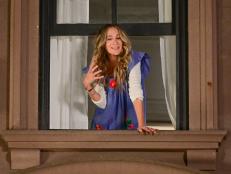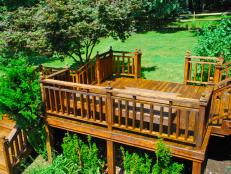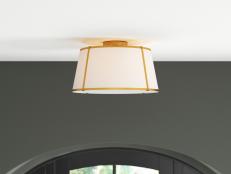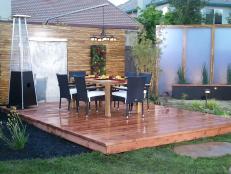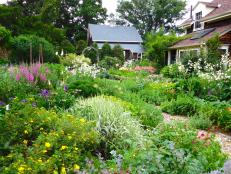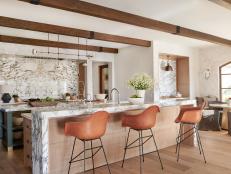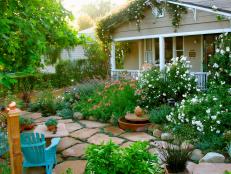Design of Outdoor Spaces Just as Important as Inside
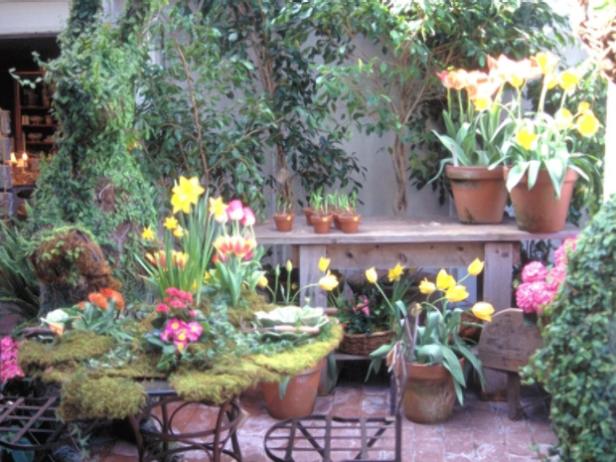
In garden design, the hard palette refers to constructed elements. The soft palette is strictly plants. Separating these two palettes makes designing your yard a lot easier. Put them together properly and you have a near perfect garden.
When interior decorators tackle a house or room they create little boards upon which fabrics, paint chips, finishes and carpeting samples are all arranged together. This is their chosen palette for the room's decor. Think of your yard that way, too.
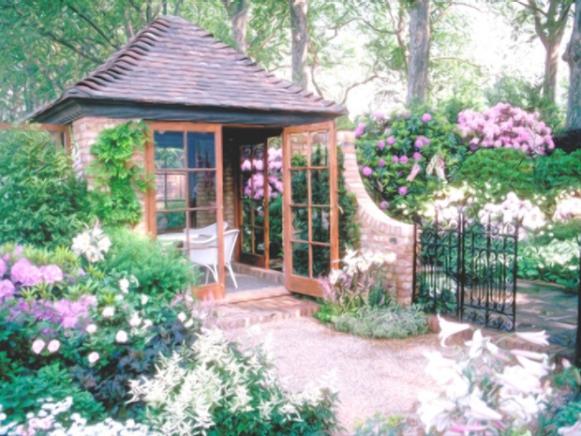
Your palette will be composed of many of the same conceptual materials because you live in a garden much the same way you live in a room. You want everything in the garden to support everything else so it presents a well-planned, integrated scheme. Creating a similar collection like the decorator's board is a big help in knowing if your theoretical backyard-design decisions will work in the real world.
Whereas a decorator features hard flooring and carpet, you will choose similar materials for outdoors. This hard palette could include brick paving, concrete, stone or wood decking. The price of each will vary considerably.
Not all paving areas in the yard receive the same attention. Those high use spaces outside living or family room doors will be seen all year around from indoors and out. This is where you put your high-end primary paving to enhance the overall visual quality. Redwood deck, stone or tile are typical choices here.
You can use a secondary paving for more functional areas. This would include connector walkways, driveways, kids' play areas and more functional surfaces. The cost per square foot may be half that of your primary paving.
The key to a successful palette is making choices to ensure that both primary and secondary paving work well together. For example, you might choose a higher-priced flagstone for a primary area and augment that with poured concrete for secondary paving. It should be tinted to provide a more analogous look. Be sure it will enhance the beauty of the stone, not fight it. Seeing a concrete admixture color sample next to the stone sample takes the guesswork out of this decision. And it's essential you study them outside in the sunshine for a true assessment of how they'll look in the yard.
These are the kinds of decisions that are rarely considered in the yard because many landscapers just don't apply the same attention to details as decorators do. But when you study really fabulous outdoor living spaces you find that all share a strongly integrated palette.
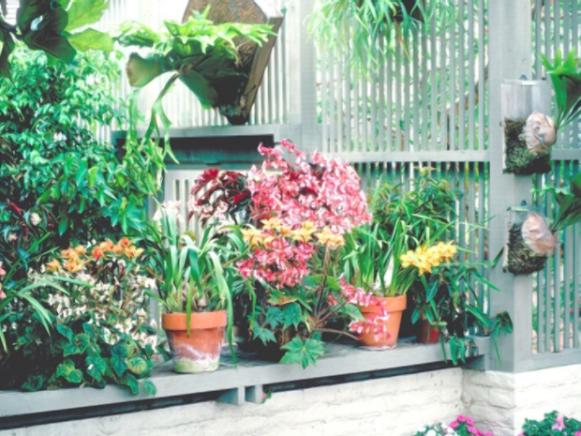
The hard palette includes other components of equal value. Building walls and fences as enclosures carry the same importance as interior wall-coverings, stair banisters and room dividers. When present together, each of these must be well matched in both color and style. Those decisions will also be made in conjunction with your paving choices, just as wall paint would be made against carpet and flooring. In short, everything must relate in one way or another.
The same applies to your garden furnishings. Whether you choose aluminum or wood outdoors, how it fits in will be dictated by your hard palette. The color of these is important because they will be sitting amidst your paving choices. Therefore these, too, should be closely compared with real samples in direct sunlight.
While all of this comparison seems burdensome and time consuming, consider it a blessing. Without comparisons you have no basis for making a choice. But when your samples help you rule out 28 of 30 possible outdoor dining sets at the home-improvement store, an overwhelming task becomes very simple.
Before you start building or buying or planting, create your sample palette. Make your decisions well in advance. When the time comes to hire contractors and spend the money, you'll sleep well at night knowing you've already got it exactly right.
(Maureen Gilmer is a horticulturist and host of Weekend Gardening on DIY-Do It Yourself Network. For more information, visit www.moplants.com. Distributed by Scripps Howard News Service.)






